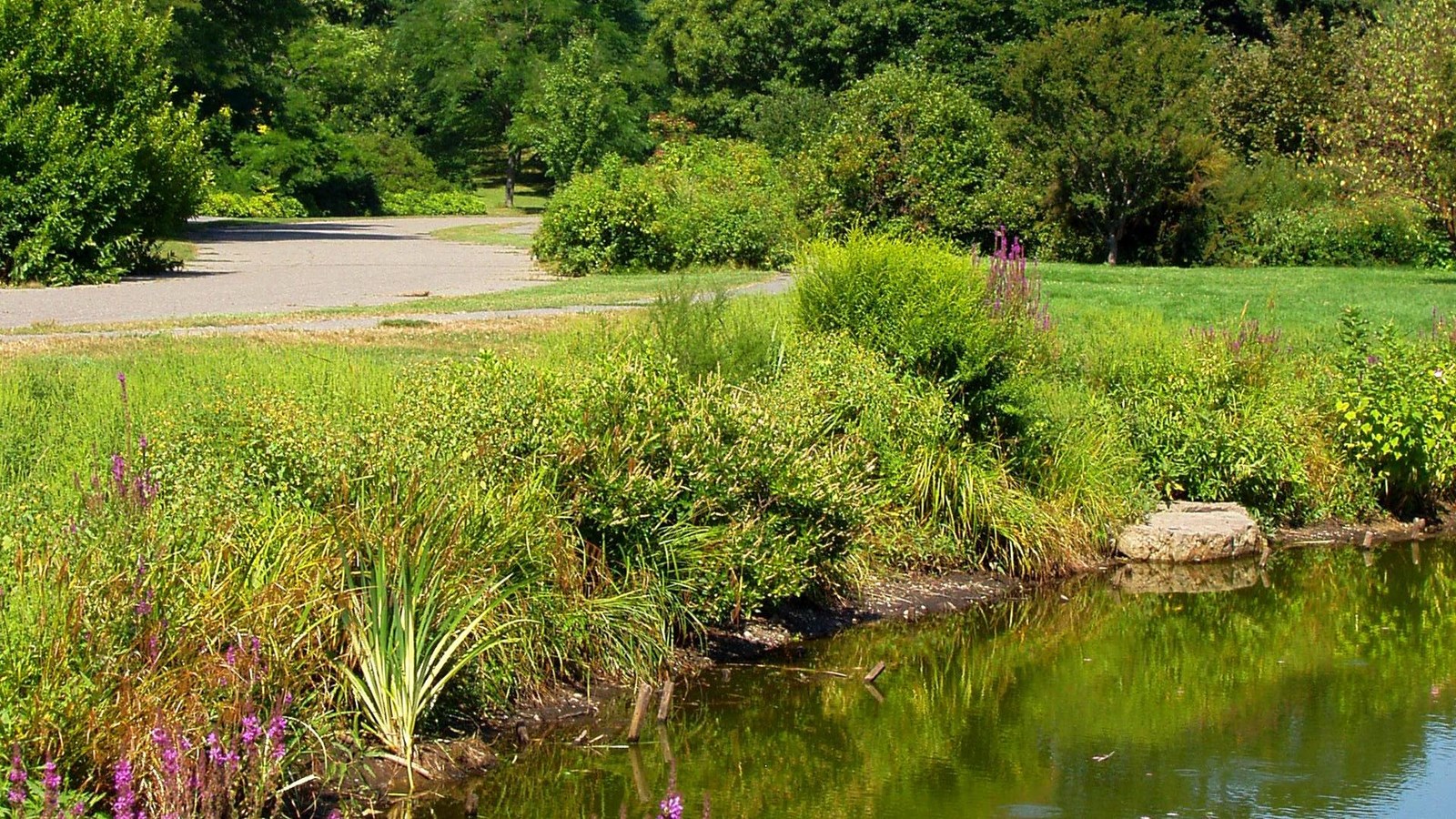Last updated: July 7, 2020
Place
Arnold Arboretum

Photo by Daderot, CC BY-SA 3.0
Harvard University’s historic and preeminent Arnold Arboretum, part of Boston’s Emerald Necklace, is a scientific research station, a public park, and a tree museum. The innovative design of the 281-acre site is the result of collaboration between landscape architect Frederick Law Olmsted and Charles Sprague Sargent, director of the Arboretum and a leading proponent for national forest conservation. A reflection of the vision of its co-designers, the Arboretum became a destination on the Emerald Necklace after its founding.
Harvard College established the Arboretum in 1872 through a bequest of money from whaling merchant James Arnold, hiring Sargent as director the following year. He hoped to build an international collection of woody species of North America and eastern Asia and arrange it according to the best scientific classification system of the day. Sargent also wanted the Arboretum grounds to have an aesthetically pleasing, park-like appearance. He contacted Frederick Law Olmsted in 1874 and invited him to collaborate on the project.
Olmsted was initially concerned that it might not be possible to combine designs for an arboretum and a park successfully. Eventually, he became enthusiastic about the project and developed a preliminary plan for the Arboretum in 1878. The ambitious project was an expensive undertaking that took four more years before the vision became a reality. A creative lease agreement between Harvard College and the City of Boston in 1882 made the Arboretum a part of Boston’s new park system. Boston gained title to the land with Harvard retaining a 1,000 year lease, renting for $1 per year. As agreed, the Arboretum staff maintains the plant collection and opens the grounds to the public, free of charge, and the city maintains the road system and provides police surveillance.
Arnold Arboretum is home to over 7,000 plants representing 4,544 different types, which are organized by species and family. Inspired by the university’s desire to collect plants, Sargent, during his tenure at the Arboretum, traveled to Asia and throughout the United States looking for plants that would grow in the New England climate. He brought many of his finds back to Boston. Though the Arboretum is his best-known accomplishment, Sargent was a prolific writer. His research led to a 14-volume work, Silva of North America, in which he described and illustrated all known species of trees of Canada and the continental United States.
All land but two areas—the Walnut Street and South Street tracts, which are owned directly by the university—are open to the public, and free guided and self-guided walking tours take visitors along the Arboretum’s paths. The Hunnewell Building Visitor Center provides exhibits, a gift shop, children’s activities, a horticultural library, maps, and staff assistance. An onsite facility conducts scientific research and offers a wide variety of public education programs. The Secretary of the Interior designated the Arboretum a National Historic Landmark in 1966.
The Arnold Arboretum's Visitor Center is located in the Hunnewell Building at 125 Arborway, Boston, MA. The Arboretum is designated as a National Historic Landmark.
To discover more Massachusetts history and culture, visit the Massachusetts Conservation Travel Itinerary website.
